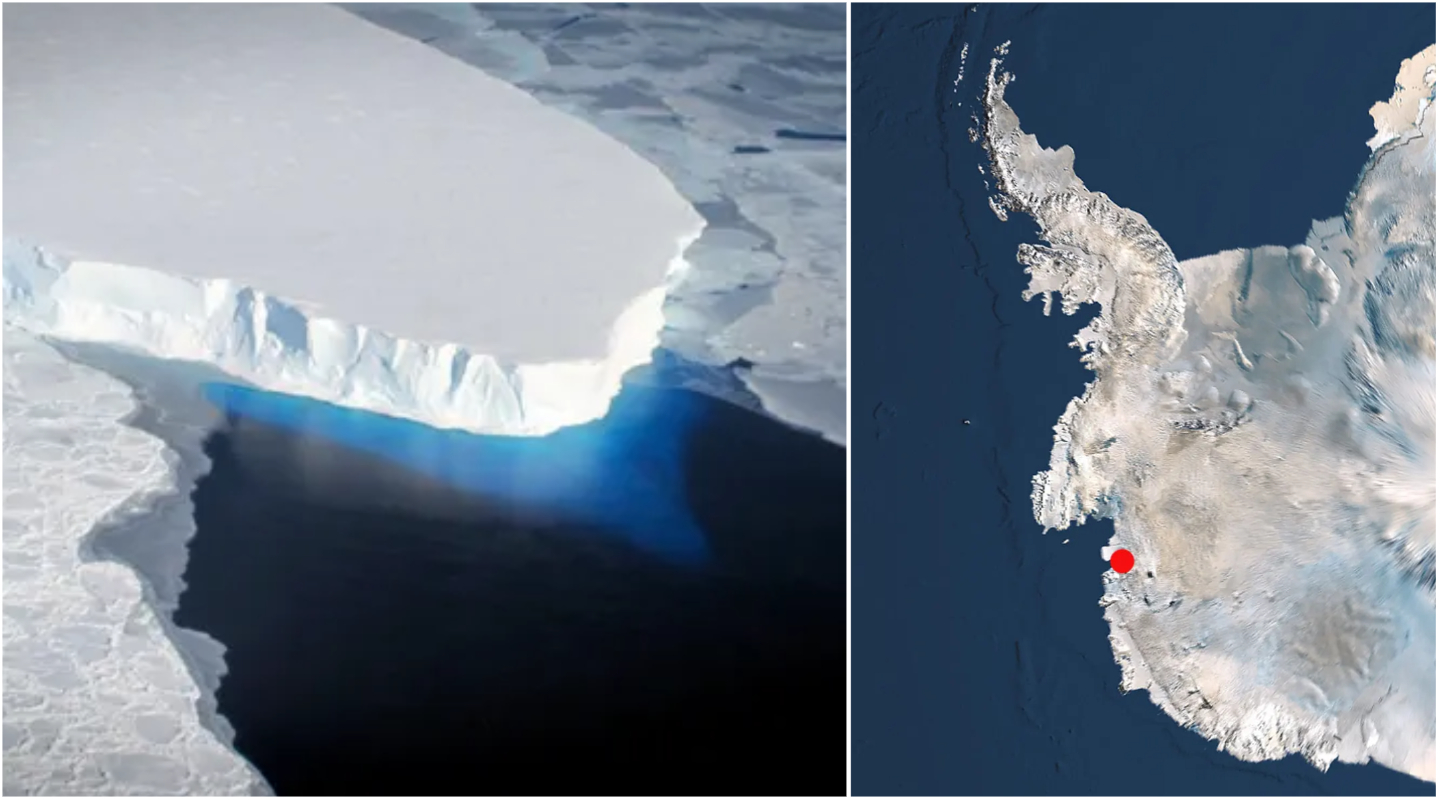Environment
There Is A Glacier In Antarctica The ‘Size of Florida’ That Is ‘Hanging on By its Fingernails’
It has been referred to as the “Doomsday glacier.”

A glacier that is the size of Florida is ‘hanging on by its fingernails,’ according to the scientists who have issued a dire warning about the situation. According to the findings of a recent research, the Thwaites Glacier, which is located in West Antarctica, is a significant source of worry since it looks to already be in a period of rapid retreat.
It has been referred to as the “Doomsday glacier,” and it has always been used as a general estimate in forecasting the rise in sea level throughout the world.
According to experts, who published their research in the journal Nature Geoscience, if the glacier were to completely melt, it is possible that the sea level would increase by a staggering 2 to 10 feet.
In 2019, while on an expedition, a group of researchers from the United States, the United Kingdom, and Sweden used the research vessel R/V Nathaniel B. Palmer to launch a state-of-the-art orange robotic vehicle called Rán that was loaded with imaging sensors.
A recent analysis of the Thwaites Glacier predicts that it may recede in the future at a pace that is twice as fast as its present rate, which poses the risk of causing a significant increase in sea level.
The expedition lasted for twenty hours, during which time the crew surveyed an area of the seafloor in front of the glacier that was almost the same size as Houston. Researchers were able to access the front of the glacier for the very first time in human history.
NBC News notes that the research looked at how the body moved in the past to make predictions about how it would move in the future. The researchers were able to monitor the glacier’s travels over the seabed from as far back as a century ago because to the impressions left on the seabed by the Thwaites Glacier. Their conclusions are based on these imprints. Satellite imagery has only supplied information on the glacier’s movements going back about 30 years at this point.
According to the findings of the researchers, the glacier was receding at a rate of nearly 1.3 miles per year approximately 100 years ago, which is twice as quickly as its movements from 2011 to 2019.
Anna Wahlin, who is a professor of physical oceanography at Gothenburg University in Sweden and a co-author of the research, commented on its findings: “About 100 years ago, it retreated faster than it is currently retreating. … You could say that’s good news, because it’s not so bad now compared to what it was in the past.”
“But you can also say that it’s bad news, because it could happen again.” She added.
Researchers are concerned that the glacier may soon melt over a ridge on the seabed and reach a big basin inland that is loaded with ice. Because of the increased amount of ice, the receding glacier would contribute more to the rise in sea levels if this occurs.
“Thwaites ticks several boxes of a glacier that might be experiencing a faster retreat in the future: It is retreating back into a deeper basin; it is in contact with warm ocean currents; it has a very large catchment area that stores large amounts of ice,” Wåhlin said.
Even though it is one of the biggest glaciers in Antarctica, the Thwaites Glacier, which is about the size of Florida, is only responsible for around five percent of Antarctica’s overall contribution to the rise and fall of global sea levels.
“Exactly how big a threat there is is unfortunately still difficult to answer — but the fact that we finally have a data point that the models can tie back to is an important part of the puzzle,” Wåhlin said.
Typos, corrections and/or news tips? Email us at Contact@TheMindUnleashed.com
